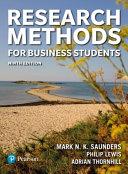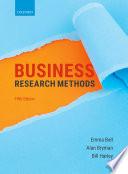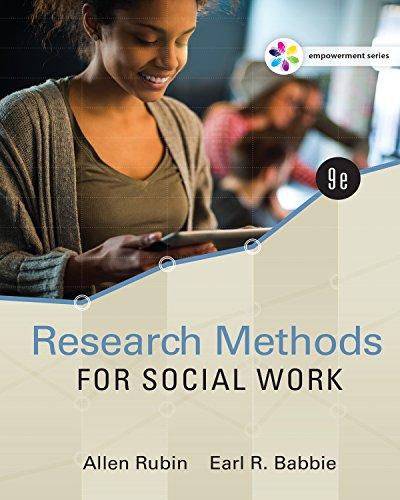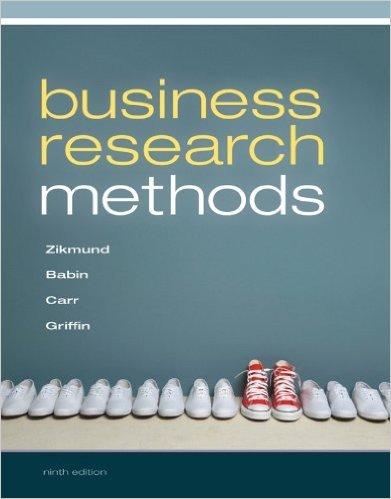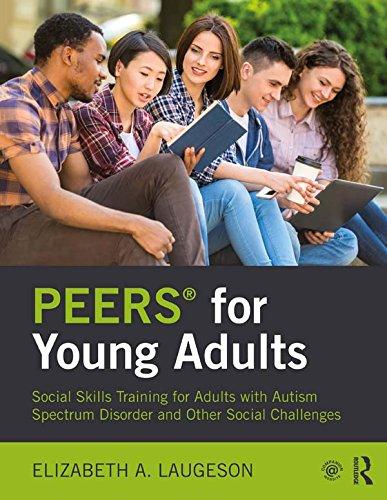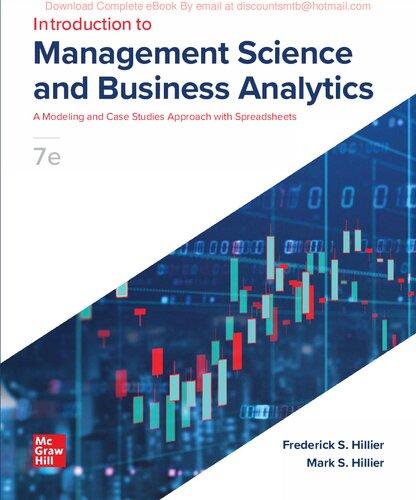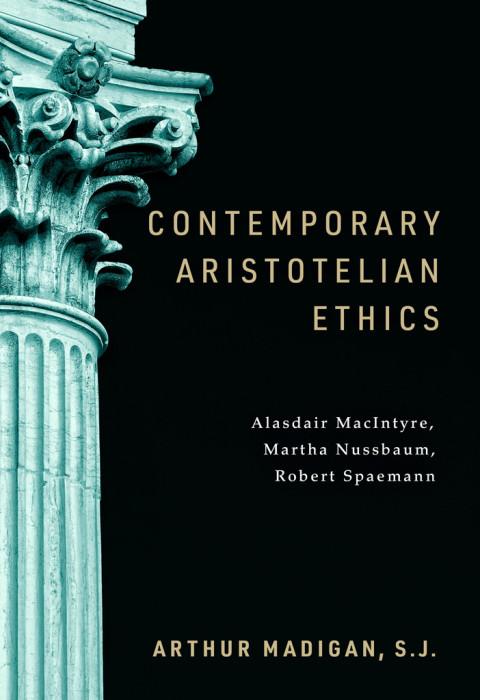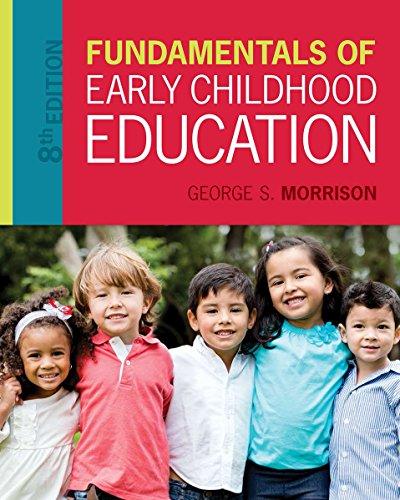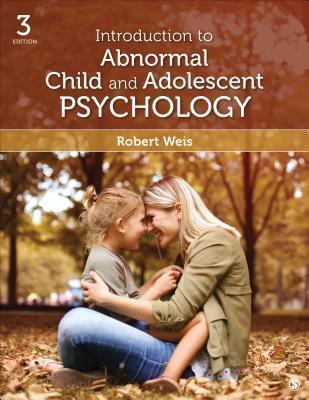https://ebookmass.com/product/research-methods-for-businessstudents-9th-edition-mark-saunders/
Instant digital products (PDF, ePub, MOBI) ready for you
Download now and discover formats that fit your needs...
Business Research Methods, 5th Edition Bell
https://ebookmass.com/product/business-research-methods-5th-editionbell/
ebookmass.com
Empowerment Series: Research Methods for Social Work 9th Edition, (Ebook PDF)
https://ebookmass.com/product/empowerment-series-research-methods-forsocial-work-9th-edition-ebook-pdf/
ebookmass.com
eTextbook 978-1111826925 Business Research Methods
https://ebookmass.com/product/etextbook-978-1111826925-businessresearch-methods/
ebookmass.com
PEERS? for Young Adults: Social Skills Training for Adults with Autism Spectrum Disorder and Other Social Challenges 1st Edition – Ebook PDF Version
https://ebookmass.com/product/peers-for-young-adults-social-skillstraining-for-adults-with-autism-spectrum-disorder-and-other-socialchallenges-1st-edition-ebook-pdf-version/ ebookmass.com
Introduction to Management Science A Modeling and Case Studies Approach with Spreadsheets 7th Edition Frederick Hillier
https://ebookmass.com/product/introduction-to-management-science-amodeling-and-case-studies-approach-with-spreadsheets-7th-editionfrederick-hillier/
ebookmass.com
TAKEN: Sheppard & Sons Investigations Book 1 Eveline Rose
https://ebookmass.com/product/taken-sheppard-sons-investigationsbook-1-eveline-rose/
ebookmass.com
Contemporary Aristotelian Ethics 7th Edition Arthur Madigan S.J.
https://ebookmass.com/product/contemporary-aristotelian-ethics-7thedition-arthur-madigan-s-j/
ebookmass.com
Bartholomew (Empire Book 1) Penelope Sky
https://ebookmass.com/product/bartholomew-empire-book-1-penelope-sky/
ebookmass.com
Fundamentals of Early Childhood Education 8th Edition, (Ebook PDF)
https://ebookmass.com/product/fundamentals-of-early-childhoodeducation-8th-edition-ebook-pdf/
ebookmass.com
https://ebookmass.com/product/introduction-to-abnormal-child-andadolescent-psychology-ebook/
ebookmass.com
Research Methods for Business Students
At Pearson, we have a simple mission: to help people make more of their lives through learning.
We combine innovative learning technology with trusted content and educational expertise to provide engaging and effective learning experiences that serve people wherever and whenever they are learning.
From classroom to boardroom, our curriculum materials, digital learning tools and testing programmes help to educate millions of people worldwide – more than any other private enterprise.
Every day our work helps learning flourish, and wherever learning flourishes, so do people.
To learn more, please visit us at www.pearson.com
RESEARCH METHODS
NINTH EDITION FOR BUSINESS STUDENTS
MARK N.K. SAUNDERS
PHILIP LEWIS • ADRIAN THORNHILL
PEARSON EDUCATION LIMITED
KAO Two KAO Park
Harlow CM17 9SR
United Kingdom
Tel: +44 (0)1279 623623
Web: www.pearson.com
First published under the Pitman Publishing imprint in 1997
Then published 2000, 2003, 2007, 20009, 2012 (print), 2016, 2019 (print and electronic)
Ninth edition published 2023 (print and electronic)
© Pearson Professional Limited 1997
© Pearson Education Limited 2000, 2003, 2007, 2009, 2012, 2016
© Mark N.K. Saunders, Philip Lewis and Adrian Thornhill 2019
© Mark N.K. Saunders, Philip Lewis and Adrian Thornhill 2023
The rights of Mark Saunders, Philip Lewis and Adrian Thornhill to be identified as authors of this work have been asserted by them in accordance with the Copyright, Designs and Patents Act 1988.
The print publication is protected by copyright. Prior to any prohibited reproduction, storage in a retrieval system, distribution or transmission in any form or by any means, electronic, mechanical, recording or otherwise, permission should be obtained from the publisher or, where applicable, a licence permitting restricted copying in the United Kingdom should be obtained from the Copyright Licensing Agency Ltd, Barnard’s Inn, 86 Fetter Lane, London EC4A 1EN.
The ePublication is protected by copyright and must not be copied, reproduced, transferred, distributed, leased, licensed or publicly performed or used in any way except as specifically permitted in writing by the publishers, as allowed under the terms and conditions under which it was purchased, or as strictly permitted by applicable copyright law. Any unauthorised distribution or use of this text may be a direct infringement of the authors’ and the publisher’s rights and those responsible may be liable in law accordingly.
All trademarks used herein are the property of their respective owners. The use of any trademark in this text does not vest in the author or publisher any trademark ownership rights in such trademarks, nor does the use of such trademarks imply any affiliation with or endorsement of this book by such owners.
Pearson Education is not responsible for the content of third-party internet sites.
The Financial Times. With a worldwide network of highly respected journalists, The Financial Times provides global business news, insightful opinion and expert analysis of business, finance and politics. With over 500 journalists reporting from 50 countries worldwide, our in-depth coverage of international news is objectively reported and analysed from an independent, global perspective. i d re i i c pe r er
ISBN: 978-1-292-40272-7 (print)
978-1-292-40273-4 (PDF) 978-1-292-40274-1 (ePub)
British Library Cataloguing-in-Publication Data
A catalogue record for the print edition is available from the British Library Library of Congress Cataloging-in-Publication Data
Names: Saunders, M. N. K., author. | Lewis, Philip, 1945- author | Thornhill, Adrian, author
i le e e rc e d r b i e de r der ilip Lewis, Adrian Thornhill.
Description: Ninth edition. | Harlow, England ; New York : Pearson, 2023. | Includes bibliographical references and index.
Identifiers: LCCN 2022042532 (print) | LCCN 2022042533 (ebook) | ISBN 9781292402727 (paperback) | ISBN 9781292402734 (pdf) | ISBN 9781292402741 (epub)
Subjects: LCSH: Business—Research. | Business—Research—Data processing. Classification: LCC HD30.4 .S28 2023 (print) | LCC HD30.4 (ebook) | DDC dc e rec rd il ble p lcc l c eb rec rd il ble p lcc l c
10 9 8 7 6 5 4 3 2 1
27 26 25 24 23
Cover design: Michelle Morgan
Cover image: © 2022 Mark N.K. Saunders, Île de Stuhan, La Trinité-sur-Mer, Brittany, France
ri edi i ype e i li b c d by r i e
Printed in Slovakia by Neografia
NOTE THAT ANY PAGE CROSS REFERENCES REFER TO THE PRINT EDITION
4 Understanding research philosophy and approaches to theory development
Mark
5 Formulating the research design
5.5
6 Negotiating access and research ethics
6.8
6.9
7 Selecting samples
8 Obtaining and evaluating secondary data
9 Collecting primary data using observation
Mark NK Saunders, Philip Lewis and Adrian Thornhill
10
Collecting primary data using interviews
Mark
12 Analysing data quantitatively 572
Mark
12.5
12.6
12.7
12.8
12.9
13 Analysing data qualitatively
14 Writing and presenting the project report
Supporting resources
Visit www.pearsoned.co.uk/saunders to find valuable online resources:
Companion Website for students
• Multiple-choice questions to test your learning
• Tutorials and datasets for Excel and SPSS
• Updated research datasets to practise with
• Updated additional case studies with accompanying questions
• Smarter Online Searching Guide – how to make the most of the Internet in your research
• Online glossary
For instructors
• Complete, downloadable Instructor’s Manual
• PowerPoint slides that can be downloaded and used for presentations
Also: The regularly maintained Companion Website provides the following features:
• Search tool to help locate specific items of content
• Email results and profile tools to send results of quizzes to instructors
• Online help and support to assist with website usage and troubleshooting
For more information please contact your local Pearson Education sales representative or visit www.pearsoned.co.uk/saunders.
How to use this book
This book is written with a progressive logic, which means that terms and concepts are defined when they are first introduced. One implication of this is that it is sensible for you to start at the beginning and to work your way through the text, various boxes, self-check questions, review and discussion questions, case studies and case study questions. You can do this in a variety of ways depending on your reasons for using this book. However, this approach may not be suitable for your purposes, and you may wish to read the chapters in a different order or just dip into particular sections of the book. If this is true for you then you will probably need to use the glossary to check that you understand some of the terms and concepts used in the chapters you read. Suggestions for three of the more common ways in which you might wish to use this book follow.
As part of a research methods course or for self-study for your research project
If you are using this book as part of a research methods course the order in which you read the chapters is likely to be prescribed by your tutors and dependent upon their perceptions of your needs. Conversely, if you are pursuing a course of self-study for your research project, dissertation or consultancy report, the order in which you read the chapters is your own choice. However, whichever of these you are, we would argue that the order in which you read the chapters is dependent upon your recent academic experience.
For many students, such as those taking an undergraduate degree in business or management, the research methods course and associated project, dissertation or consultancy report comes in either the second or the final year of study. In such situations it is probable that you will follow the chapter order quite closely (see Figure P.1). Groups of chapters within which we believe you can switch the order without affecting the logic of the flow too much are shown on the same level in this diagram and are:
• those associated with obtaining or collecting data (Chapters 8, 9, 10 and 11);
• those associated with data analysis (Chapters 12 and 13).
Within the book we emphasise the importance of beginning to write early on in the research process as a way of clarifying your thoughts. In Chapter 1 we encourage you to keep a reflective diary, notebook or journal throughout the research process so it is helpful to read this chapter early on. We recommend you also read the sections in Chapter 14 on writing prior to starting to draft your critical review of the literature (Chapter 3).
Alternatively, you may be returning to academic study after a gap of some years, to take a full-time or part-time course such as a Master of Business Administration, a Master of Arts or a Master of Science with a Business and Management focus. Many students in such situations need to refresh their study skills early in their programme, particularly
Chapter 8: Obtaining and evaluating secondary data
Chapter 1: e e rc re ec i e di rie
Chapter 14: Writing and presenting your project report
Chapter 2: Generating a research idea and developing the proposal
Chapter 3: Critically reviewing the literature
Chapter 4: Understanding research philosophy and approaches to theory
Chapter 5: Formulating the research design
Chapter 6: Negotiating access and research ethics
Chapter 7: Selecting samples
Chapter 9: Collecting primary data through observation
Chapter 10: Collecting primary data using interviews and diaries
Chapter 11: Collecting primary data using questionnaires
Chapter 12: Analysing data quantitatively
Chapter 13: Analysing data qualitatively
Chapter 14: Writing and presenting your project report
Figure P.1 Using this book for your research methods course and associated project
those associated with critical reading of academic literature and academic writing. If you feel the need to do this, you may wish to start with those chapters that support you in developing and refining these skills (Chapters 3 and 14), followed by Chapter 8, which introduces you to the range of secondary data sources available that might be of use for other assignments (Figure P.2). Once again, groups of chapters within which we believe
Chapter 1: e e rc re ec i e di rie
Chapter 14: Writing and presenting your project report
Chapter 3: Critically reviewing the literature
Chapter 8: Obtaining and evaluating secondary data
Chapter 2: Generating a research idea and developing the proposal
Chapter 4: Understanding research philosophy and approaches to theory
Chapter 5: Formulating the research design
Chapter 6: Negotiating access and research ethics
Chapter 7: Selecting samples
Chapter 9: Collecting primary data through observation
Chapter 10: Collecting primary data using interviews and diaries
Chapter 12: Analysing data quantitatively
Chapter 11: Collecting primary data using questionnaires
Chapter 13: Analysing data qualitatively
Chapter 14: Writing and presenting your project report
P.2 Using this book as a returner to academic study
Figure
you can switch the order without affecting the logic of the flow too much are shown on the same level in the diagram and are:
• those chapters associated with primary data collection (Chapters 9, 10 and 11);
• those associated with data analysis (Chapters 12 and 13).
In addition, we would recommend that you re-read Chapter 14 prior to starting to write your project report, dissertation or consultancy report, or if you need to undertake a presentation.
In whichever order you choose to read the chapters, we would recommend that you attempt all the self-check questions, review and discussion questions and those questions associated with the case studies. Your answers to the self-check questions can be selfassessed using the answers at the end of each chapter. However, we hope that you will actually attempt each question prior to reading the answer! If you need further information on an idea or a technique, then first look at the references in the further reading section.
At the end of each chapter, the section headed ‘Progressing your research project’ lists a number of tasks. Such tasks might involve you in just planning a research project or, alternatively, designing and distributing a questionnaire of your own. They all include making an entry in your reflective diary or notebook. When completed, these tasks will provide a useful aide-mémoire for assessed work (including a reflective essay or learning log) and can be used as the basis for the first draft of your project report. It is worth pointing out here that many consultancy reports for organisations do not require you to include a review of the academic literature.
As a guide through the research process
If you are intending to use this book to guide you through the research process for a research project you are undertaking, such as your dissertation, we recommend that you read the entire book quickly before starting your research. In that way you will have a good overview of the entire process, including a range of techniques available, and will be better able to plan your work.
After you have read the book once, we suggest that you re-read Section 1.5 on keeping a reflective diary or notebook and Sections 14.2–14.10 on writing first. Then work your way through the book again following the chapter order. This time you should attempt the self-check questions, review and discussion questions and those questions associated with each case study to ensure that you have understood the material contained in each chapter prior to applying it to your own research project. Your responses to self-check questions can be assessed using the answers at the end of each chapter.
If you are still unsure as to whether particular techniques, procedures or ideas are relevant, then pay special attention to the ‘Focus on student research’, ‘Focus on management research’ and ‘Focus on research in the news’ boxes. ‘Focus on student research’ boxes are based on actual students’ experiences and illustrate how an issue has been addressed or a technique or procedure used in a student’s research project. ‘Focus on management research’ boxes discuss recent research articles in established refereed academic journals, allowing you to see how research is undertaken successfully. These articles are easily accessible via the main online business and management databases. ‘Focus on research in the news’ boxes provide topical news stories of how particular research techniques, procedures and ideas are used in the business world. You can also look in the ‘Further reading’ for other examples of research where these have been used. If you need further
information on an idea, technique or procedure then, again, start with the references in the further reading section.
Material in some of the chapters is likely to prove less relevant to some research topics than others. However, you should beware of choosing techniques because you are happy with them, if they are inappropriate. Completion of the tasks in the section headed ‘Progressing your research project’ at the end of Chapters 2–13 will enable you to generate all the material that you will need to include in your research project, dissertation or consultancy report. This will also help you to focus on the techniques and ideas that are most appropriate to your research. When you have completed these tasks for Chapter 14 you will have written your research project, dissertation or consultancy report and also prepared a presentation using slides or a poster.
As a reference source
It may be that you wish to use this book now or subsequently as a reference source. If this is the case, an extensive index will point you to the appropriate page or pages. Often you will find a ‘checklist’ box within these pages. ‘Checklist’ boxes are designed to provide you with further guidance on the particular topic. You will also find the contents pages and the glossary useful reference sources, the latter defining over 750 research terms. In addition, we have tried to help you to use the book in this way by including cross-references between sections in chapters as appropriate. Do follow these up as necessary. If you need further information on an idea or a technique then begin by consulting the references in the further reading section. Wherever possible we have tried to reference books that are in print and readily available in university libraries and journal articles that are in the major business and management online databases.
Pearson’s Commitment to Diversity, Equity and Inclusion
Pearson is dedicated to creating bias-free content that reflects the diversity, depth and breadth of all learners’ lived experiences. We embrace the many dimensions of diversity including, but not limited to, race, ethnicity, gender, sex, sexual orientation, socioeconomic status, ability, age and religious or political beliefs.
Education is a powerful force for equity and change in our world. It has the potential to deliver opportunities that improve lives and enable economic mobility. As we work with authors to create content for every product and service, we acknowledge our responsibility to demonstrate inclusivity and incorporate diverse scholarship so that everyone can achieve their potential through learning. As the world’s leading learning company, we have a duty to help drive change and live up to our purpose to help more people create a better life for themselves and to create a better world.
Our ambition is to purposefully contribute to a world where:
• Everyone has an equitable and lifelong opportunity to succeed through learning.
• Our educational products and services are inclusive and represent the rich diversity of learners.
• Our educational content accurately reflects the histories and lived experiences of the learners we serve.
• Our educational content prompts deeper discussions with students and motivates them to expand their own learning and worldview.
We are also committed to providing products that are fully accessible to all learners. As per Pearson’s guidelines for accessible educational Web media, we test and retest the capabilities of our products against the highest standards for every release, following the WCAG guidelines in developing new products for copyright year 2022 and beyond. You can learn more about Pearson’s commitment to accessibility at: https://www.pearson.com/us/accessibility.html
While we work hard to present unbiased, fully accessible content, we want to hear from you about any concerns or needs regarding this Pearson product so that we can investigate and address them.
• Please contact us with concerns about any potential bias at: https://www.pearson.com/report-bias.html
• For accessibility-related issues, such as using assistive technology with Pearson products, alternative text requests, or accessibility documentation, email the Pearson Disability Support team at: disability.support@pearson.com
in universities throughout the world. We are extremely grateful to all the reviewers who gave their time and shared their ideas.
Inevitably, the body of knowledge of research methods has developed further since 2019, and we have revised all chapters accordingly. Our experiences of teaching and supervising students and working through the methods in classes have suggested alternative approaches and the need to provide alternative material. Consequently, we have taken the opportunity to update and refine existing worked examples, remove those that were becoming dated, and develop new ones where appropriate. However, the basic structure remains much the same as the previous eight editions.
Other minor changes and updating have been made throughout. Needless to say, any errors of omission and commission continue to remain our responsibility.
As with previous editions, much of our updating has been guided by comments from students and colleagues, to whom we are most grateful. We should like particularly to thank students from University of Birmingham, and various Doctoral Symposiums for their comments on all of the chapters. Colleagues in both our own and other universities have continued to provide helpful comments, advice and ideas. We are particularly grateful to Heather Cairns-Lee, Zeineb Djebali, Colin Hughes, Emrah Karakaya, Juliet Kele, Amanda Lee, Ben Saunders, and Nicholas Wheeler for their insightful comments and help with early drafts of chapters. Colleagues and friends again deserve thanks for their assistance in providing examples of research across the spectrum of business and management, coauthoring chapters, writing case studies and in reviewing parts of this book: Neve Abgeller, Mina Beigi, Alexandra Bristow, Clare Burns, Catherine Cassell, Fariba Darabi, Viktor Dörfler, Adina Dudau, Sarah Forbes, Mat Hughes, Joséphine Lapointe, Natasha Mauthner, Megane Miralles, Emily Morrison, Trevor Morrow, Shahrzad Nayyeri, Jonathan Scott, Maura Sheehan, Melika Shirmohamma, Marc Stierand and Catherine Wang.
We would also like to thank all of the staff at Pearson (both past and present) who supported us through the process of writing the ninth edition. Our thanks go, in particular, to Vicky Tubb, our commissioning editor, and Kay Richardson our online content developer for their continuing support and enthusiasm throughout the process. We would also like to express our thanks to Andrew Muller as content producer and as copy-editor. MNKS PL AT March 2022
Reference
Nind, M., Coverdale, A. and Meckin, R. (2021) National Centre for Research Methods: Changing Social Research Practices in the Context of Covid-19: Rapid Evidence Review. UKRI Economic and Social Research Council. Available at: https://eprints.ncrm.ac.uk/id/ eprint/4458/1/NCRM%20Changing%20Research%20Practices_Rapid%20Evidence%20 Review_FINAL%20REPORT.pdf [Accessed 1 March 2022]

